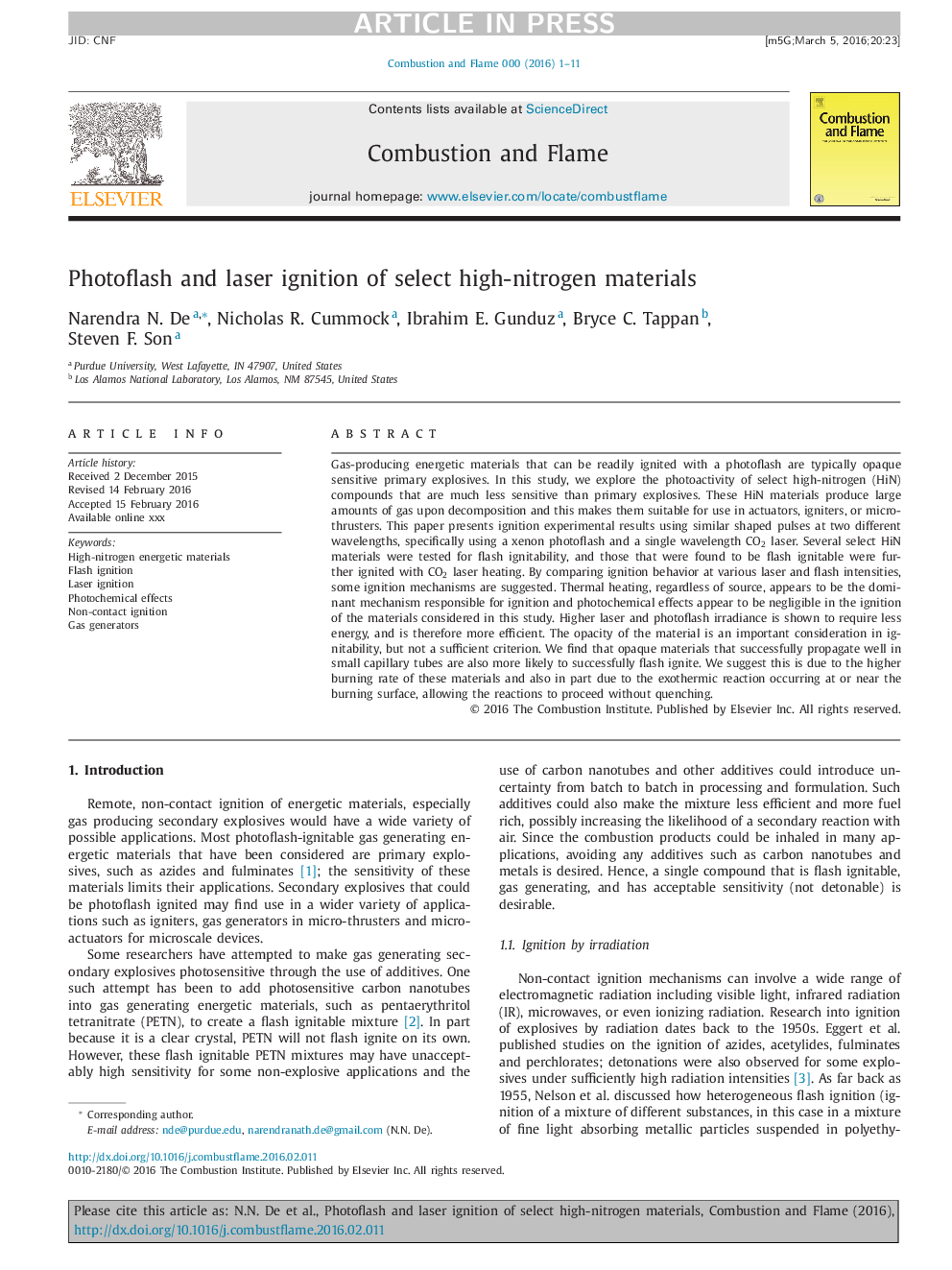| Article ID | Journal | Published Year | Pages | File Type |
|---|---|---|---|---|
| 6594106 | Combustion and Flame | 2016 | 11 Pages |
Abstract
Gas-producing energetic materials that can be readily ignited with a photoflash are typically opaque sensitive primary explosives. In this study, we explore the photoactivity of select high-nitrogen (HiN) compounds that are much less sensitive than primary explosives. These HiN materials produce large amounts of gas upon decomposition and this makes them suitable for use in actuators, igniters, or micro-thrusters. This paper presents ignition experimental results using similar shaped pulses at two different wavelengths, specifically using a xenon photoflash and a single wavelength CO2 laser. Several select HiN materials were tested for flash ignitability, and those that were found to be flash ignitable were further ignited with CO2 laser heating. By comparing ignition behavior at various laser and flash intensities, some ignition mechanisms are suggested. Thermal heating, regardless of source, appears to be the dominant mechanism responsible for ignition and photochemical effects appear to be negligible in the ignition of the materials considered in this study. Higher laser and photoflash irradiance is shown to require less energy, and is therefore more efficient. The opacity of the material is an important consideration in ignitability, but not a sufficient criterion. We find that opaque materials that successfully propagate well in small capillary tubes are also more likely to successfully flash ignite. We suggest this is due to the higher burning rate of these materials and also in part due to the exothermic reaction occurring at or near the burning surface, allowing the reactions to proceed without quenching.
Keywords
Related Topics
Physical Sciences and Engineering
Chemical Engineering
Chemical Engineering (General)
Authors
Narendra N. De, Nicholas R. Cummock, Ibrahim E. Gunduz, Bryce C. Tappan, Steven F. Son,
